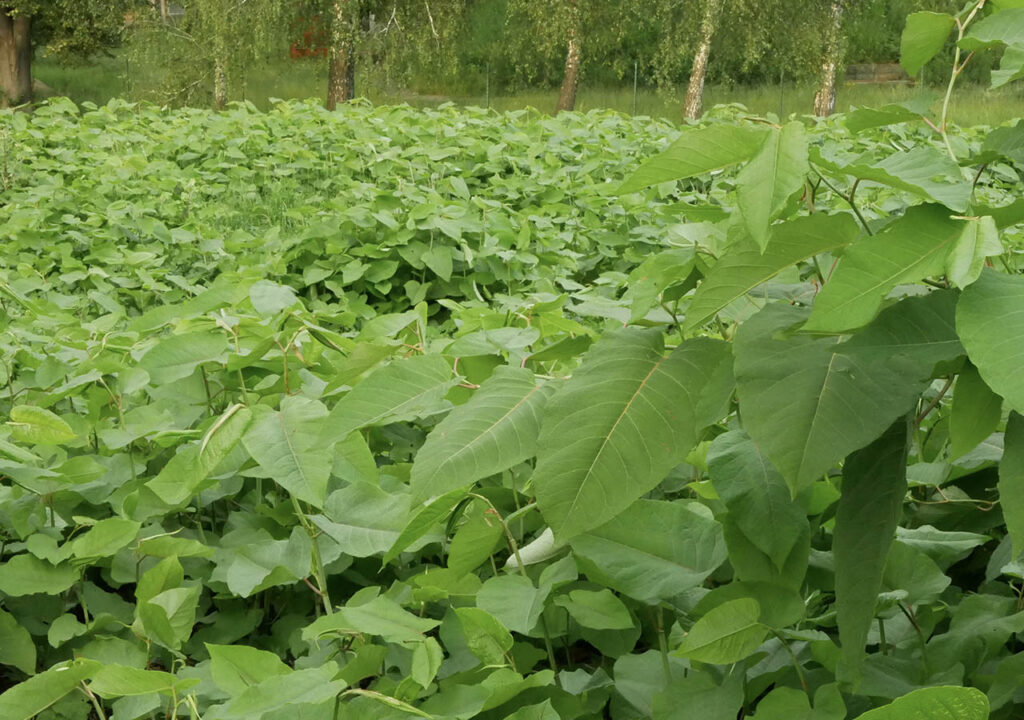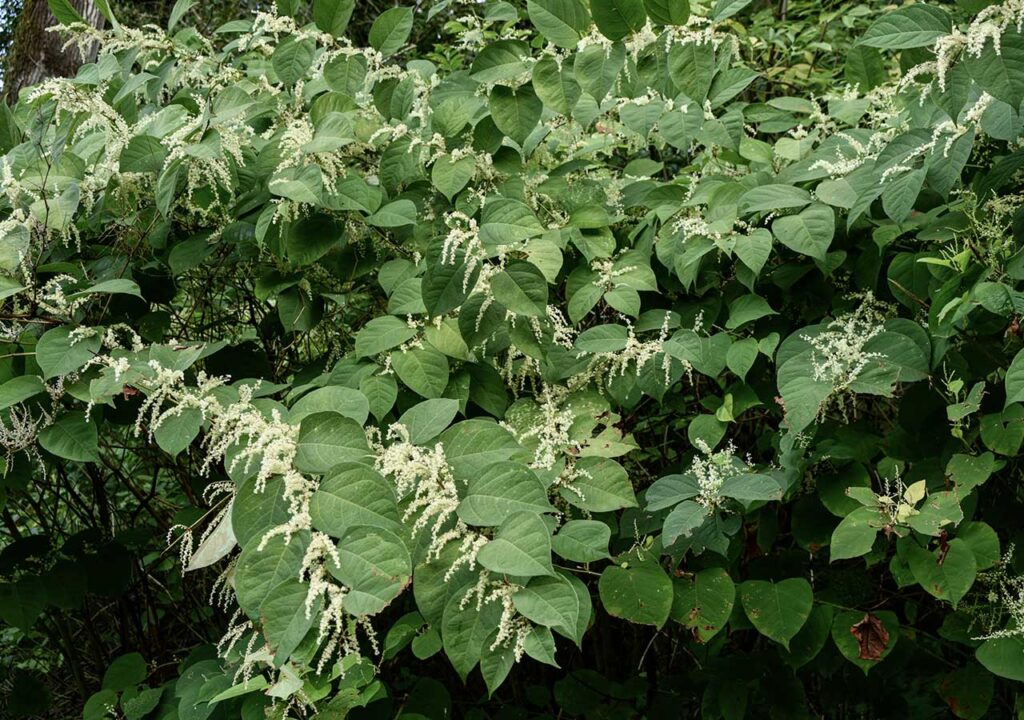How to Get Rid of Japanese Knotweed
What is and How to Get Rid of Japanese Knotweed – all you need to know…
Here in this article, we will be looking at what is and Japanese Knotweed and how to get rid of Japanese Knotweed.
Japanese Knotweed is an invasive plant species that poses significant challenges to local ecosystems. This plant originates from East Asia, specifically Japan, Korea, and China. In the UK, it has established itself and spread rapidly, often causing damage to properties and infrastructure. Japanese Knotweed has hollow stems that can reach heights of up to 3 meters. Its distinctive heart-shaped leaves and small white flowers make it easily recognisable during the blooming season.


Why is it a problem in the UK?
Japanese Knotweed threatens the health of local ecosystems and human environments in several ways. It aggressively outcompetes native plants for space, light, and nutrients. This competition leads to reduced biodiversity, as native species struggle to survive in its presence. Additionally, the extensive root system of Japanese Knotweed can cause structural damage to buildings, roads, and other infrastructure. The plant’s ability to grow through concrete and tarmac poses a significant challenge for property owners and local authorities
Understanding Japanese Knotweed
You can recognise Japanese Knotweed by its distinctive zigzag growth pattern and large, heart-shaped leaves. The plant typically blooms from late summer to early autumn, producing small clusters of white flowers. After flowering, it produces numerous seeds, although it primarily spreads through its extensive rhizome network. Each plant can generate a vast underground root system, allowing it to colonise new areas rapidly. This ability to spread quickly increases its negative impact on local habitats and infrastructure.

Where to find Japanese Knotweed
You can find Japanese Knotweed in various disturbed areas. It often thrives along riverbanks, roadsides, and in urban environments where the soil has been disturbed. You may also encounter it in gardens and neglected land. The plant prefers sunny or partially shaded locations, which support its rapid growth. Keep an eye out for its tall stems and distinctive leaves during the growing season.
How does Japanese Knotweed grow and spread?
Japanese Knotweed is known for its vigorous growth. It can reach its full height in just one growing season, making it a formidable competitor. The plant primarily spreads through its rhizomes, which can extend several meters underground. These rhizomes can produce new shoots, allowing the plant to establish in nearby areas. Furthermore, the plant can also propagate through stem fragments, which can root if broken off and disturbed. This resilience makes control efforts more challenging.
How to get rid of Japanese Knotweed in the UK
Effective control of Japanese Knotweed requires a combination of methods. Mechanical removal is one option, but it can be risky due to the potential for incomplete removal of rhizomes. For effective treatment, you should dig out the roots and rhizomes, ensuring that all fragments are removed. Herbicides are often the most reliable method for control.
Apply systemic herbicides in late summer or early autumn when the plant is actively taking up nutrients. In our experience, spraying herbicide on mature plants fails to impact the future growth of knotweed. The application of herbicide by injection is an effective method of treatment. Always follow the manufacturer’s instructions for application to ensure both effectiveness and safety, or get Endrick Environmental in to help.
Why do we treat Japanese Knotweed?
Treating Japanese Knotweed is essential to restoring local ecosystems and protecting property. When you remove this invasive plant, you create space for native plants to thrive. This improves biodiversity in affected areas and protects the integrity of local habitats. Healthy ecosystems support a wider range of wildlife, contributing to a balanced environment. By taking action, you can help ensure that local habitats remain diverse and resilient.
Also, important to point out, if you watch the video below, is it can have a significant impact on your property. It can cause thousands of pounds of damage to your property, damaging drains, growing through walls and more. Not only will it reduce the value of your property and affect your house insurance, but if knotweed spreads from your property to your neighbours, you could be sued. Given its difficulty to manage, it can take a few years to get under control. Given that Glyphosate is used to kill Japanese Knotweed and how toxic it is, it is advisable to call in experts who know how to safely handle and manage this process. We at Endrick Environmental specialise in controlling Japanese Knotweed. Contact us today if you are looking for Japanese Knotweed management and how to get rid of Japanese Knotweed, and let us help you get it under control.
The Challenge ahead
Controlling Japanese Knotweed presents several challenges. The plant can quickly return even after removal efforts, making persistence key. Regular monitoring of affected areas is essential to catch any new growth early. You may need to repeat removal methods multiple times to achieve long-term success. Staying vigilant and committed is crucial in the fight against this invasive species.
Controlling Japanese Knotweed together
Collaboration is vital in tackling the issue of Japanese Knotweed. Engage with local community groups to share knowledge and strategies. Sharing information to help prevent the spread of this robust invasive species is critical towards the shared objective of the removal of this plant from local ecosystems. Sharing information and resources to encourage the identification of knotweed stands can enhance your efforts. Your involvement can significantly impact the preservation of local habitats. What specific actions will you take to help control Japanese Knotweed in your area?
If you need help with controlling Japanese Knotweed, contact us today, and we can discuss your needs. Endrick Environmental specialise in Japanese Knotweed management in the UK. Contact us here, and we can discuss the issues you are having and look into how we can help. We look forward to hearing from you.
